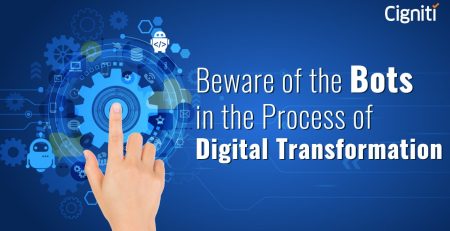Logistics 4.0 and the next-gen delivery solutions
Every business relies on flawless supply chain and logistics management. At the end of the day, everything boils down to the efficiency and capabilities of logistics. As Sun Tzu once said, “The line between disorder and order lies in logistics.” The next-gen logistics and supply chain market is projected to grow up to USD 75 billion in 2030 from USD 32 billion in 2019, suggested a latest study conducted by LogisticsIQTM.
E-commerce is growing, rather, exploding. It is on a double-digit growth trajectory that does not seem to plummet any time soon. Online shopping has indeed become mainstream. Today, if a business is not online, does it even exist! The biggest and the most important reason for this exponential rise is the narrowing timeframe between the purchase and the actual receipt of the goods.
The penetration of digital across every segment and vertical has led to the rise of Logistics 4.0. The ‘Amazon effect’ is disrupting logistics and the future of supply chain. One-day and two-day deliveries are attracting more customers and further increasing the demands. Logistics, supply chain, and transportation are getting completely transformed because of two reasons – first, the rising demand elicited by the Amazon effect, and second, the advancing technologies that bestow the abilities to fulfill those demands.
In this blog, we’ll dive into the technologies that will have the biggest role in the logistics transformation and the emerging next-gen solutions that are empowering deliverability of the logistics industry.
Add transparency, subtract variability
Last-mile delivery is becoming a prime focus of retailers and Etailers across the globe. Businesses are centering their attention on transporting a product from the source hub to the hands of the customers. User convenience is, as always, at play here. Customers’ expectations are changing as they strive for higher efficiency and greater transparency.
Customers expect their products to be delivered to them and delivered to them fast. In order to uphold the speed of the delivery process, there are two essential things that businesses need to incorporate within their logistics system:
- Add transparency: By providing customers the provision to track the exact location of their product in the supply chain helps businesses garner trust and develop credibility. Customer want real-time traceability, which eliminates any sort of uncertainty and ambiguity from the process. Knowing where their product is makes the customers keep calm and trust their suppliers better.
- Subtract variability: Again, this is about establishing a trustworthy relationship between a business and their customers. Lesser the variability there is in the logistics cycle or supply chain, more is the certainty of product’s delivery date. This means that by taking out the variable part out of the logistics equation, businesses can very well build a reliable and dependable image.
The logistics tech 2020
Digital is inevitable. However, the digital status of logistics is underwhelming. Only 28% of the logistics and transportation companies rated themselves as ‘advanced’ on digitization in a recent PwC study. As a matter of fact, 50% of the companies lack a digital culture and the required training to embrace the emerging technologies.
- IoT: It is expected that IoT technologies alone offer a $2 billion opportunity for the logistics industry. Real-time end-to-end product visibility, efficient last-mile delivery, inventory tracking and optimization, demand & supply synchronization – all these things become possible due to IoT. The advanced sensor and communication devices enable accurate tracking of assets and predictive maintenance, thus making smart warehouses a reality. Physical internet, based on IoT, supports efficient resource planning by improving supply chain transparency.
- Automation and AI: Autonomous vehicles, drones, robots, and droids are taking the load off the manual labors. With increasing data analytics power, the industry will be able to plan and execute more effectively. Intelligent, data-driven automated solutions minimize the possibility of errors and therefore, improve cost-efficiency of the delivery and surveillance processes.
- Cloud: Using cloud offers three main benefits to the industry – flexibility, scalability, and cost-effectiveness. Cloud facilitates new platform-based business models and helps establish standardized and harmonized processes across an organization.
- 3D printing: 3D printing technologies is revolutionizing the logistics industry and changing the face of a supply chain. 3D printing has been and will be immensely significant in leading reducing the costs of transportation for any industry. 3D printing will be a backbone of smart manufacturing and allow streamlining of the supply chain.
- 5G connectivity: 5G may not be a reality yet, we can soon expect to experience the promises it made – zero latency, excellent speed. In 2020, 5G will start to rollout on a greater scale. 5G-enabled devices will pick up and transmit data in real-time for processing. This will allow logistics sector to establish a fast and stable supply chain.
Next-gen logistics solutions
The technologies that we used to term “next-gen” are slowly becoming an integral part of everyday operations. Although there is still a long way for logistics to go before it reaches the required level of digital maturity, these solutions are making the journey easier:
- Digital twin: The digital twin technology is proving to be disruptive in logistics and cargo handling. A physical entity might have a few weaknesses, which the digital twin helps to assess and identify for future operations. Digital twins may collect the necessary data related to product and packaging and then use that data for the physical twin. Digital twin technology also assists 3D printing in making accurate models and leads to a risk-free development.
- Robotics: Backed by artificial and augmented intelligence, warehouse robots are limiting and somewhat eliminating the manual labor. With the help of 5G, it is estimated that there will soon be millions of robots operational in over 50K warehouses across the globe. These robots will lift, store, sift, and transport the material based on the inputs they receive over the network. Autonomous mobile robots or AMRs are already being used in the logistics chain for facilitating faster dispatch and shipment. With these robotic machines, there is lesser probability of error as well as damages.
- Drones: Various companies are developing and testing drones for gaining the competitive edge in the market. Amazon, DHL, Uber, and several others are partnering with innovative industry incumbents to enhance their technological capabilities. The logistics companies are leveraging drones to channel last-mile deliveries.
To sum up
The rising customer expectations as well as the market competition is making it absolutely necessary for the logistics provider to level up. The new entrants in the industry are bringing along cutting-edge solutions. The market incumbents, by collaborating with these entrants, can get ahead of the competition while keeping their customers content.
At the bottom line of all the technological developments and innovations lie the power of connectivity through IoT. The network of IoT devices will have to run seamlessly to ensure a flawless flow of operations. In such a scenario, it is essential that logistics company perform thorough, end-to-end software testing. Logistics software testing and IoT testing eliminates any possibility of glitches or operational hiccups, thus, helping the businesses to develop trust among their customers.
Talk to us for your logistics software testing concerns.





Leave a Reply